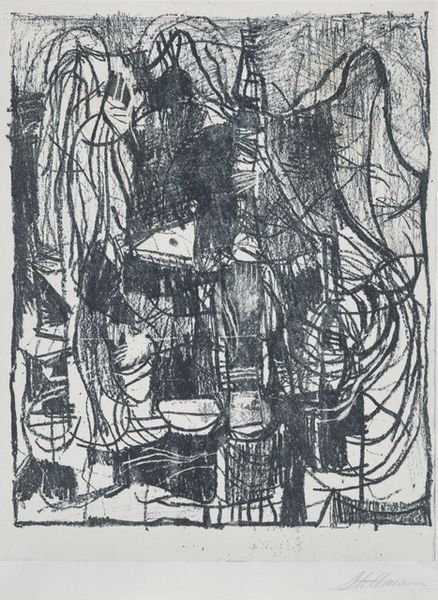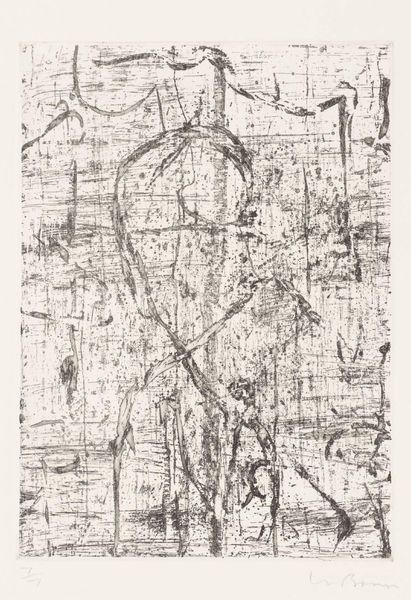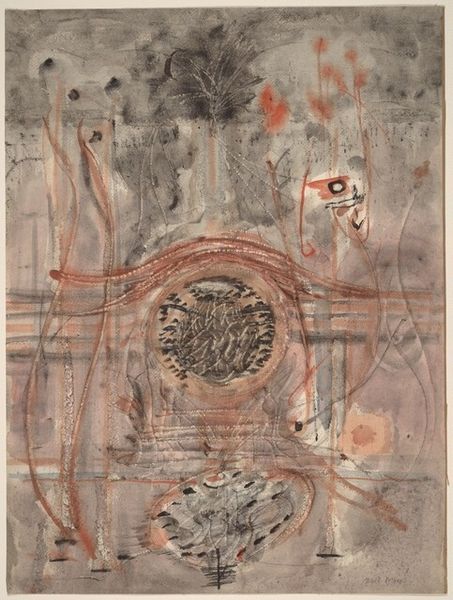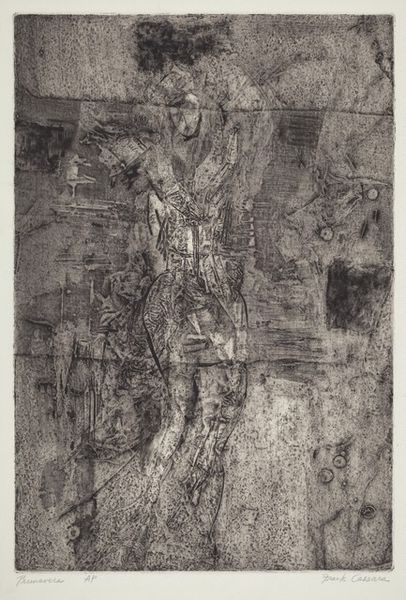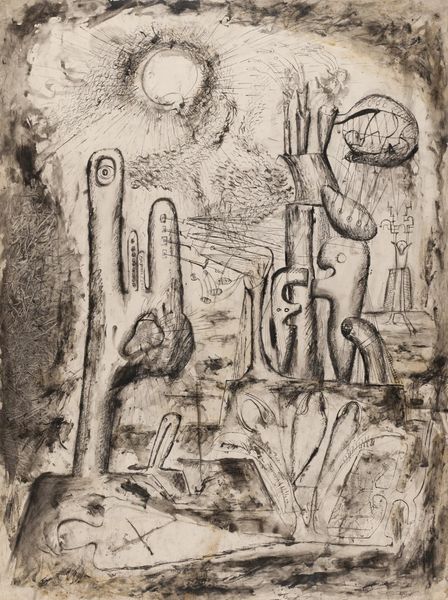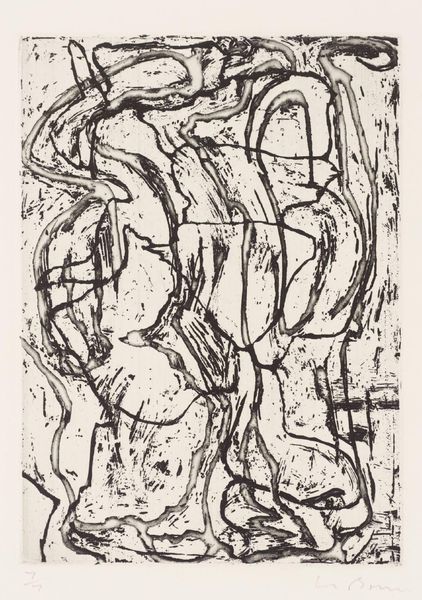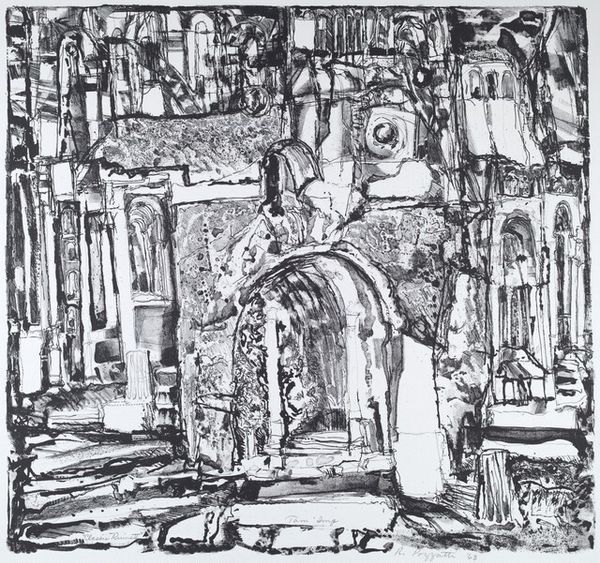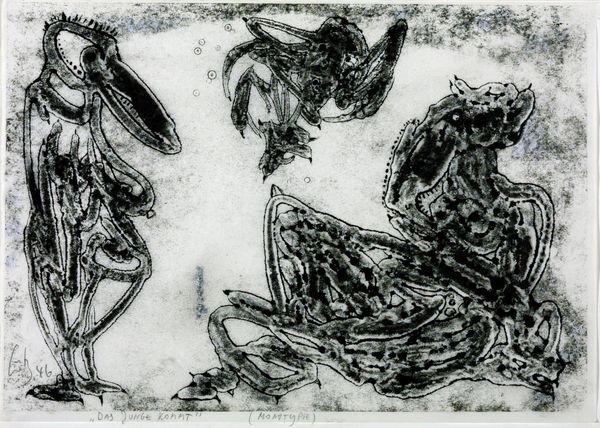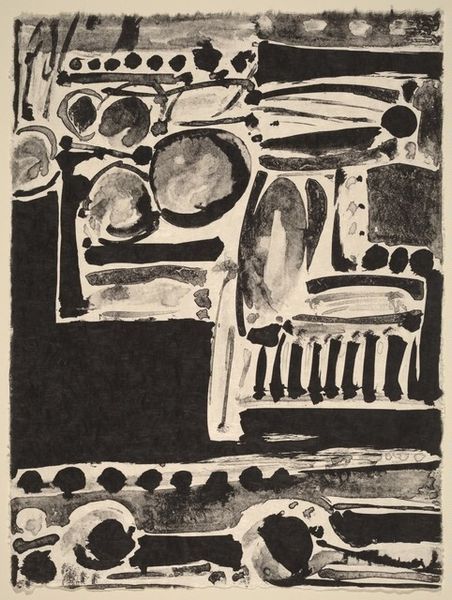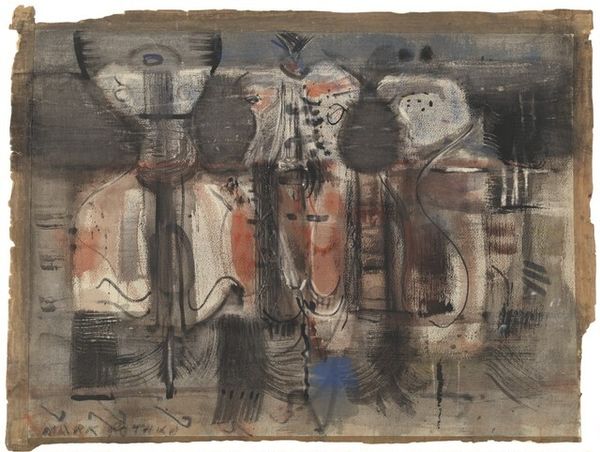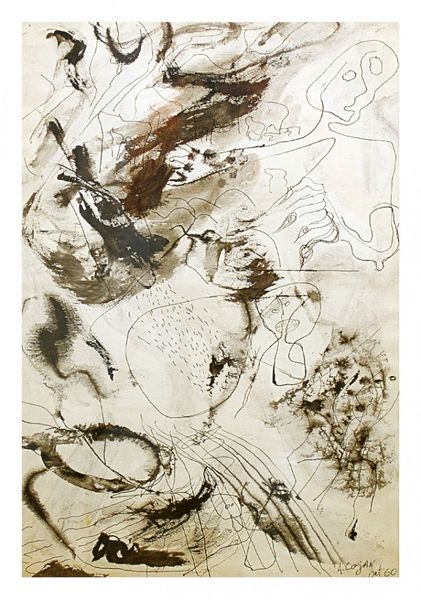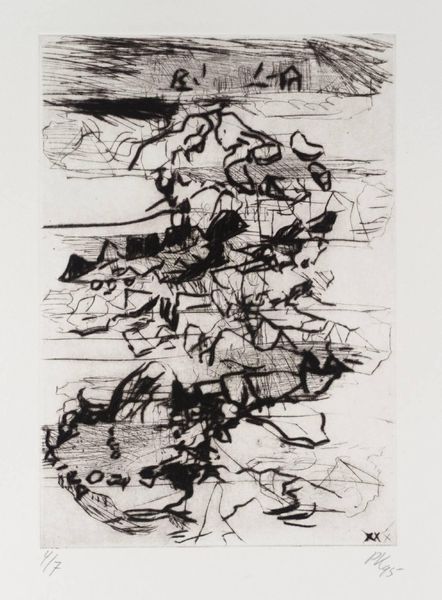
#
abstract-expressionism
# print
#
form
#
abstraction
#
line
Dimensions: stone: 395 x 313 mm image: 395 x 313 mm sheet: 506 x 383 mm
Copyright: National Gallery of Art: CC0 1.0
Editor: Here we have Leon Golub's "Bone-Head," a print from 1953. It's incredibly evocative... almost like looking at the fractured remnants of something monumental. What sociopolitical context might have influenced Golub in creating such a stark image? Curator: It's important to remember that 1953 was a period saturated with anxieties, both personal and geopolitical. Abstract Expressionism itself can be seen as a reaction against the perceived failures of previous art movements, especially in the face of global conflicts. Artists began turning inward, exploring themes of existential dread, anxiety, and the fragmented self. Editor: So, "Bone-Head," is more than just abstraction – it reflects a societal mood? Curator: Precisely. The title suggests mortality, fragility even. Consider the shadow of the Second World War and the rise of the Cold War and nuclear anxieties looming over artistic expression. Abstract Expressionism, especially with its emphasis on raw emotion, was viewed as a potent response against established norms. The “heroic” artist, grappling with profound universal themes, became a powerful cultural symbol, in dialogue with institutions that valued such individualism. Editor: But wouldn't all abstraction be a similar rejection of established norms then? Curator: Not necessarily. The crucial factor is *how* it rejects. The gestural intensity, the raw and often unsettling imagery... that is where artists expressed those themes. Can you sense any kind of intention when examining the composition and application? Editor: I see chaotic lines, almost like shattered remains but also traces of intentional construction. A kind of building-up from nothing, hinting to maybe not total annihilation? Curator: Exactly. See how societal pressures often influence, or become directly materialized within, art, through choices, aesthetic, and the adoption of styles like abstraction. That interpretation can, of course, vary among different people within society, however! Editor: That's really fascinating; I hadn't thought about the level of social critique inherent in even the style itself, how powerful choosing it can be. Curator: And I hadn't thought of the trace of rebuilding within the abstraction – your eye opens new dialogues about rebirth after something like WWII!
Comments
No comments
Be the first to comment and join the conversation on the ultimate creative platform.
